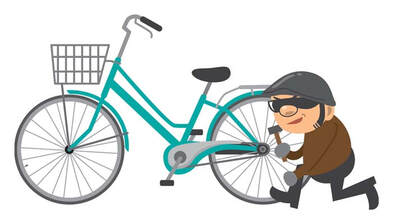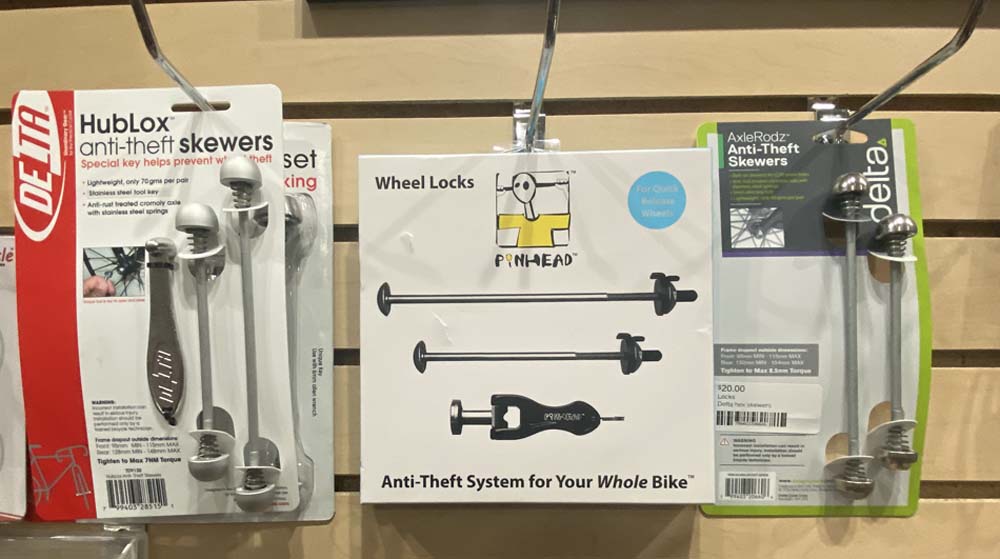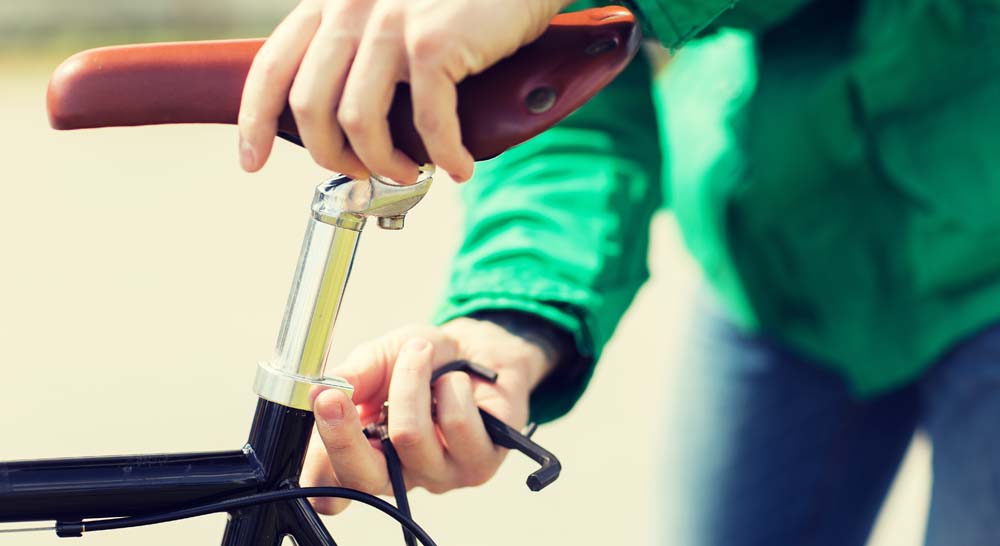 Bike security should be a serious consideration for any cyclist because a bike is stolen every 30 seconds in the United States. It is well known that best practices to reduce the risk of theft include utilizing a good lock and employing situational practices such as locking your bike in a well lit area to a sturdy bike rack, bringing it indoors at night and using multiple locks. Sometimes what is stolen is not the complete bike but important parts such as wheels or saddle. Having the right security equipment for parts and accessories provides another level of protection. We're not going to go into bike locks in depth here, but as a reminder, in an urban area the best style lock to use to secure your bike frame is a ulock with a hardened steel shackle to resist hand tools, bolt cutters, and leverage attacks. Stay away from cable locks which can easily be cut with wire cutters unless you are using it as a secondary lock in addition to a ulock. Not all ulocks are created equal so be sure you utilize one from a major brand such as Kryptonite, Abus, Onguard, or Rocky Mounts. Most companies self-rate locks and a minimum rating of 5 out of 10 is recommended. How to protect your bike wheels Even if you utilize a quality ulock on the bike frame, your wheels may be at risk. The most vulnerable are wheels attached to the bike with a quick release skewer. This way of attaching wheels to the frame allows a wheel to be removed without any tools. This is helpful if you need to remove a wheel to enable a bike to fit in a car or to repair a flat tire, but this toolless setup makes it easy for a thief to walk up to your bike and quickly steal the wheels. Wheels that utilize bolts are also at risk since a thief only needs a standard wrench to loosen the bolt and remove the wheels. To protect them, you need equipment to lock the wheels to the frame. Here are some options:
How to protect your bike saddle Theft of bicycle saddles is not common, but it does happen and is a major inconvenience when it does. If you have an expensive saddle there is a risk it will catch the eye of a thief who might remove both the saddle and the seat post. This makes it difficult for you to ride your bike home and if it does rain when you are without a seat post, rain will get into your frame inviting rust. Here are some solutions for securing your saddle
How to be notified of bike tampering
There are now bike alarm systems you can mount on your bike that sounds an alarm and sends an alert to your cell phone if your bike is jostled or moved. These devices are sometimes integrated into ebikes because the ebike battery mounted on the bike can also be utilized to power the alarm. Besides helping to deter tampering with your bike by sounding an alarm, it makes it more difficult for a thief to remove accessories such as lights and bike bags. Some systems employ cellular-enabled GPS to assist in recovery of a stolen bike. Examples are Galeo and ILockIt. If you don't have a bike alarm and your accessories are not attached with bolts, just remove them with you when you leave your bike. For lights, you can usually leave the bracket on the handlebar or seat post and slip the lights off into your pocket and for bags, remove them and take them with you using the carrying handle most have. By investing in a few additional pieces of equipment in addition to a quality lock you can increase the likelihood of your bike being available with all its parts and pieces for your next glorious cycling adventure. Comments are closed.
|
Earth Rider Blog about CycingAuthorSharon Kaminecki and others comment on adventures in bicycling and other stories Categories
All
Archives
August 2023
|





